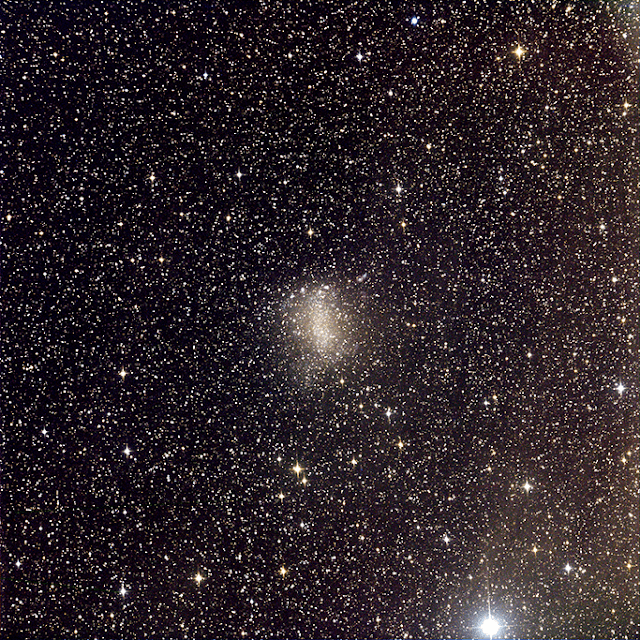 |
| M31 - "The Andromeda Galaxy" Imaged via Insight Observatory's ATEO Portal on it's 16" f/3.7 Remote Robotic Telescope (ATEO-1). |
The latest image above was taken completely through the ATEO online access portal. This image, a bit more impressive, was taken on the morning of October 5th, 2018, with filters Luminance at 600 seconds along with Red, Blue, and Green at 300 seconds. All binning 2x2 and the image processing were done in PixInight and Photoshop CS6.
While the Andromeda Galaxy makes quite an impression, we thought why not image another galaxy of a completely opposite type. NGC 6822 was loaded into the Telescope Console on the ATEO Portal as a target as well. The specifications of this image are Luminance 300 Seconds, RGB 120s, and all 2x2 binning.
 |
| NGC 6822 - "Barnard's Galaxy" Imaged via Insight Observatory's ATEO Portal on it's 16" f/3.7 Remote Robotic Telescope (ATEO-1). |
NGC 6822 (also known as Barnard's Galaxy, IC 4895, or Caldwell 57) is a barred irregular galaxy approximately 1.6 million light-years away in the constellation Sagittarius. Part of the Local Group of galaxies, it was discovered by E. E. Barnard in 1884, with a six-inch refractor telescope. It is one of the closer galaxies to the Milky Way. It is similar in structure and composition to the Small Magellanic Cloud and is about 7,000 light-years in diameter.

No comments:
Post a Comment